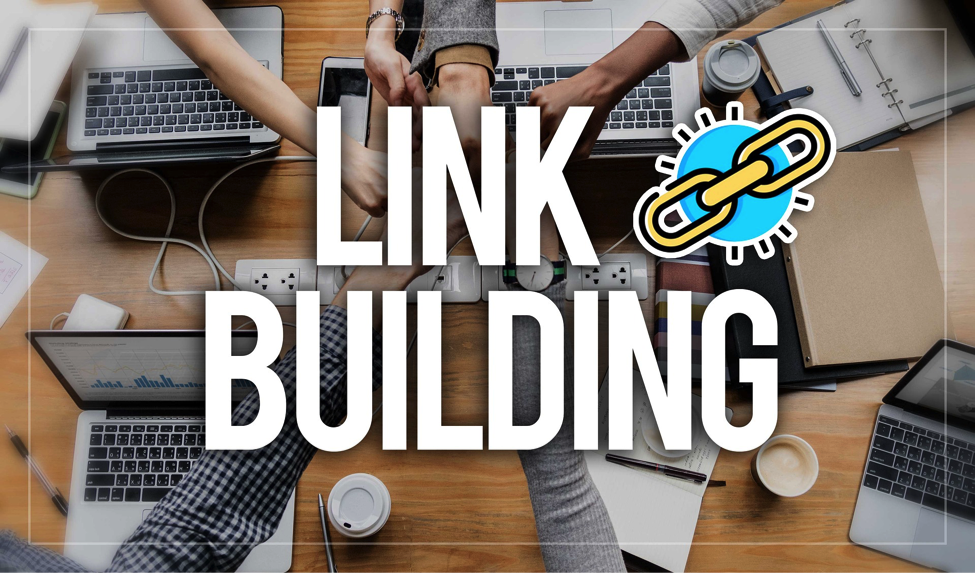What factors do you think help to rank a website among the top search results? Search engine optimization? Relevant, informative, and engaging content? A user-friendly design? Or all of these and more? Definitely all of these and more is the correct answer. But we’re still missing one! Link-building!
In fact, link-building is a common SEO tactic that relies on creating relevant, informative, and engaging content for your target audience and driving them to your website. Those are two of the things we mentioned above. Now we’re not saying that it’s the holy grail of digital marketing that’ll get you more web traffic, but it’ll definitely help. And because of how cumbersome link-building can be, marketing and SEO experts tend to neglect it, if not wholly overlook it.
What is link-building?
If you’re completely clueless, link-building is simply redirecting traffic from here and there on the internet and diverting it to your particular landing page or the main website. Previously it was all about the quantity of the links. But now Google’s AI has become more intelligent as it increases your ranking predominantly on high-quality and reliable inbound links. Effective link-building is crucial to enhancing your business or brand’s reputation in the digital space. The better the links leading to your website, the higher will search engine algorithms rank it.
What are the best link-building tactics?
If you blindly start spamming websites with your links, you de-rank and lose your existing authority and position. The key is to use link-building wisely and create value for the reader instead of coming off as too desperate for attention. You can always use a backlink checker to evaluate your current links, their quality, and the amount of traffic they’re driving. It will help you to develop an effective long-term link-building strategy. However, for now, consider these link-building tactics for improving the amount of traffic to your website.
1. Guest blogging
Link-building is an exchange of value; you provide informative content to another website and get traffic in return. Similarly, guest blogging entails writing unique content for other authoritative websites with a hyperlink to your website’s pages and getting a backlink in return. It is not a challenging task to accomplish. However, you need to ensure that you provide quality content to the website you intend to publish on as a guest blogger. It also means that you need to choose the website carefully as that will eventually determine your reputation. And you wouldn’t want to compromise that, would you?
To start, identify the best websites that accept guest posts within your niche and the ones that you know can get you a good amount of traffic. Once you’ve identified them, outreach, write a top-quality blog post keeping all the do’s and don’ts in mind, submit, and reap the benefits. Bonus tip: Ensure that the site you choose allows do-follow links.
2. Use Social Media Platforms
Social media can add a big bonus to your link-building efforts. All you need to do is share posts, information, blogs, pictures, or videos that have a link redirecting people to your web page. However, to leverage the full potential of social media in your link-building efforts, you need to understand how things can go viral and publish the content accordingly. Now imagine posting an instructional blog or a video, and it goes viral on social media. Wouldn’t that be awesome?
Social media thrives on creating engaging experiences. You just need to identify the right platform, the right audience, and the right tone of communication. For instance, you want to create a backlink for a scarves’ shop. What will be a better option to go about creating a suitable backlink? A video on how to tie a scarf or a blog on the same topic? You can hyperlink both contents forms, but videos are known to drive better engagement.
3. Rebuild broken links
Rebuilding broken links is like taking advantage of someone else’s hard work. Broken links are links that redirect website traffic to broken URLs or 404 pages. You can identify them by using several online tools.
Once you identify them, develop content around it (assuming you don’t have any existing content to use immediately). It does not necessarily have to be a blog; you can have an infographic or a video that delivers the exact value to the hyperlinked text. And finally, approach the website owner and request her or him to replace the broken link with yours. Voila!
How you approach the website owner will be your deal-cracker. You need to point out the broken links and provide your quality-content against them. Along with this, pitch your business strategically. Tell the owner how customer-centric and valuable your content is and offer them a benefit in return.
4. Design Infographics
Infographics are one of the most engaging forms of creating highly-informative and easy-to-digest forms of content. People prefer to read bite-size content in an attractive format instead of reading endless walls of bland text. Whether you publish it on your website, on a guest blogging site, or social media, infographics will always remain a big hit.
What makes infographics so unique is the information they possess. If you have plenty of original, unpublished research data, convert it into meaningful stats ad information and design it into a trendy visual. These come in handy in rebuilding broken links and sprucing up your website.
5. Check On Competitors’ Backlinks
The best way to identify where you stand in a highly competitive landscape is by keeping a check on your competitors. Your aim should be to outrank them on SERPs, and the only way you’re going to be able to do that is by knowing what they’re up to. Make a list of your top competitors and “stalk” them on every social media platform on which they maintain an active presence. Use online tools to study their backlinks and keywords to develop a competitive link-building strategy.
Being competitive is essential to stay one step ahead in the rat race to top rankings. If you don’t, your competitors will outsmart and outrank you in no time.
Final Thoughts
Link-building enables businesses to drive traffic to their web pages by establishing a position of authority within the digital space. Creating quality links requires a considerable amount of human and capital resources and time spent in outreaching, PR, and content creation. In short, you need to be patient to see actual results. Quality and consistency are vital. Following the tactics mentioned above will help you get there slowly, but the long-term benefits will be worth the time and effort spent.



